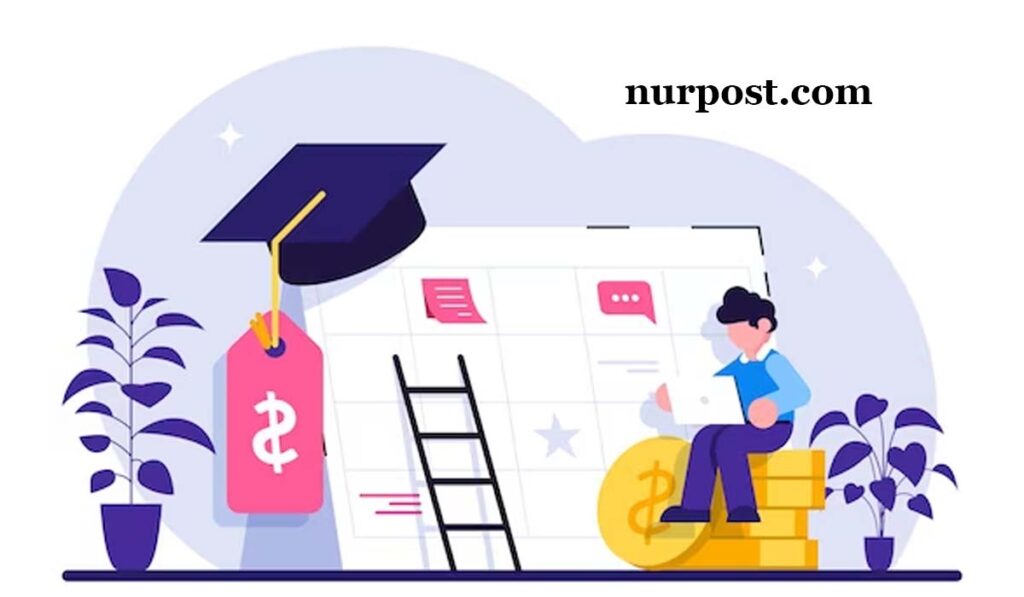 Student Loans Coming Back With High Interest Rates in a devastating blow to aspiring college students and graduates burdened with debt, student loans have made a forceful comeback with high-interest rates.
Student Loans Coming Back With High Interest Rates in a devastating blow to aspiring college students and graduates burdened with debt, student loans have made a forceful comeback with high-interest rates.
Student Loans Coming Back With High Interest Rates
As the cost of education continues to rise and the job market becomes increasingly competitive, this resurgence threatens to compound the financial struggles already faced by countless individuals.
This article explores the implications of skyrocketing interest rates on student loans and sheds light on the challenges students encounter in their pursuit of higher education.
The Rising Interest Rates
For years, student loans have been a topic of concern, with borrowers grappling to repay substantial debts while dealing with stagnant wages and a sluggish economy. However, the recent resurgence of student loans accompanied by exorbitant interest rates has further deepened the crisis.
Student Loans Coming Back With High Interest Rates
Traditionally, federal student loans offered relatively low-interest rates to support students’ education. However, this trend has witnessed a reversal, with interest rates climbing to unprecedented levels.
Private lenders, in particular, have exploited the demand for education financing by imposing exorbitant rates, often surpassing the rates offered by federal loan programs.
Impact on Students and Graduates
The impact of high-interest student loans is far-reaching, affecting both current students and graduates. Here are some key consequences:
Financial Strain
High-interest rates amplify the financial strain on students, exacerbating the burden of loan repayment. Students are forced to allocate more of their income towards servicing their debt, leaving little room for essential expenses, savings, or investments.
Prolonged Debt Repayment
With higher interest rates, the timeline for paying off student loans lengthens, leading to prolonged debt burdens that hinder individuals’ ability to reach important life milestones.
Buying a home, starting a family, or pursuing entrepreneurial ventures become increasingly challenging for those shackled by massive student loan debt.
Limited Career Choices
Graduates saddled with hefty loan repayments may be compelled to prioritize higher-paying jobs over pursuing their passions or working in public service sectors.
The burden of high-interest loans can deter individuals from taking risks or exploring less lucrative career paths, ultimately hindering personal and professional growth.
Student Loans Coming Back With High Interest Rates
The resurgence of student loans with high-interest rates poses a significant threat to the financial well-being of students and graduates. The burden of debt inhibits personal and professional growth while perpetuating socioeconomic inequalities.
By implementing comprehensive measures such as government intervention, financial literacy programs, loan forgiveness initiatives, and affordable alternatives, we can begin to address this crisis. It is crucial to create an environment where education is accessible to all, without being weighed down by astronomical debt and oppressive interest rates.
Inequality and Socioeconomic Impact
The burden of high-interest student loans disproportionately affects students from low-income backgrounds, exacerbating existing inequalities in educational opportunities.
Students from disadvantaged backgrounds may be dissuaded from pursuing higher education altogether, perpetuating a cycle of limited economic mobility.
Addressing the Crisis
To alleviate the adverse effects of high-interest student loans, several measures can be considered:
Government Intervention
Governments should play a proactive role in regulating interest rates on student loans, ensuring they remain affordable and fair. Increased funding for federal student loan programs and stricter oversight of private lenders can help prevent exploitative practices.
Financial Literacy and Support
Enhanced financial education programs can empower students to make informed decisions regarding their education financing.
Providing comprehensive guidance on loan terms, interest rates, repayment options, and loan forgiveness programs can help students navigate the complex world of student loans.
Expanded Loan Forgiveness Programs
Governments and educational institutions should explore options for expanding loan forgiveness programs. These programs could be targeted toward graduates who pursue careers in public service, education, or other areas that contribute to society.
Such initiatives alleviate the burden of high-interest loans and encourage individuals to pursue their passions without being constrained by financial obligations.
Affordable Alternatives
Investing in affordable higher education alternatives, such as community colleges or vocational programs, can mitigate the need for excessive student loans.
Promoting and expanding these options can provide students with more accessible pathways to acquire skills and knowledge without incurring overwhelming debts.
Student Loans Coming Back With High Interest Rates
In a disheartening development for students and recent graduates, student loans have resurfaced with soaring interest rates, further exacerbating the already overwhelming burden of educational debt. As the cost of higher education continues to rise.
Coupled with stagnant wages and a competitive job market, the return of high-interest student loans poses significant challenges for individuals seeking to attain a college degree. This article delves deeper into the repercussions of rising interest rates and explores potential strategies for students to navigate this financial predicament.
The Escalating Interest Rates
Traditionally, federal student loans have provided a lifeline for students pursuing higher education, offering relatively manageable interest rates. However, the landscape has shifted dramatically, with interest rates on student loans skyrocketing in recent years.
This surge in interest rates is primarily attributable to a combination of market factors, including economic fluctuations, changes in lending practices, and increasing demand for higher education financing.
Challenges Faced by Students and Graduates
The resurgence of student loans with high interest rates has far-reaching implications, impacting students and graduates in numerous ways:
Mounting Financial Pressure
The burden of high interest rates adds an additional layer of financial pressure on students. Making loan repayment increasingly challenging.
A substantial portion of borrowers’ income must be allocated towards servicing their debt. Leaving limited resources for other critical expenses, such as housing, healthcare, or saving for the future.
Extended Debt Repayment Periods
With interest rates on the rise, the length of time required to repay student loans is prolonged. Graduates may find themselves carrying their educational debt well into their thirties, forties, or even beyond, hampering their ability to achieve financial milestones, such as homeownership or starting a family.
Limited Economic Mobility
High-interest student loans can constrain individuals’ career choices and economic mobility. Graduates burdened by significant debt may feel compelled to pursue higher-paying jobs to meet their loan obligations.
Even if these positions do not align with their long-term career goals or personal aspirations. Consequently, the pursuit of passion, entrepreneurship, or public service may be hindered.
Inequality in Education
The burden of high-interest student loans disproportionately affects students from marginalized communities and low-income backgrounds.
Affordability barriers may deter these students from pursuing higher education. Perpetuating systemic inequalities and limiting social mobility for those who would benefit most from a college degree.
Addressing the Crisis
To mitigate the challenges posed by high-interest student loans, it is imperative to explore and implement potential solutions:
Legislative Reforms
Governments should prioritize addressing the issue of high interest rates on student loans through legislative measures. This may involve capping interest rates, increasing funding for federal loan programs. Establishing safeguards to prevent exploitative lending practices by private lenders.
Private lenders, in particular, have capitalized on the demand for student loans by imposing exorbitant interest rates. As a result, students and graduates find themselves grappling with interest rates that far exceed what they anticipated when initially securing their loans.
The financial strain inflicted by these high interest rates casts a long shadow on individuals’ ability to repay their loans and build a stable financial future.
Enhanced Financial Education
Comprehensive financial literacy programs should be integrated into school curricula. Providing students with the necessary knowledge and skills to make informed decisions regarding student loans.
Educating borrowers about interest rates, loan terms, repayment options. Available resources can empower them to navigate the complexities of educational debt effectively.
Loan Refinancing and Consolidation
Borrowers burdened by high-interest student loans should explore options for refinancing or consolidating their debts.
This process involves obtaining a new loan with more favorable terms to replace existing loans. Refinancing can help individuals secure lower interest rates, reduce monthly payments, and potentially shorten the repayment period.
Advocacy for Affordable Education
Society at large must advocate for affordable higher education. By pressuring policymakers and educational institutions to address the underlying causes of rising tuition costs.
Such as increased public funding for universities or the expansion of scholarship and grant programs. We can help alleviate the need for excessive student loans.
Conclusion
The return of student loans with high interest rates poses significant challenges for students and graduates seeking a college education. The financial strain and extended debt repayment periods hinder individuals’ financial stability and limit their choices.
However, through legislative reforms, financial education, loan refinancing, and advocacy for affordable education. We can work towards creating a more equitable and accessible system that empowers individuals to pursue. Their educational dreams without being crippled by overwhelming debt.
